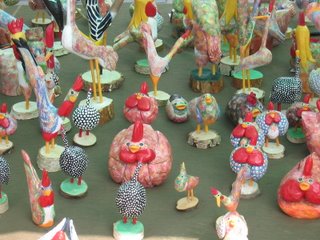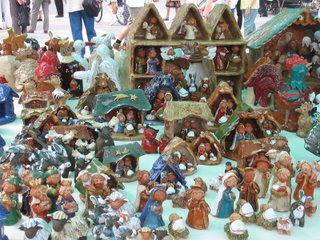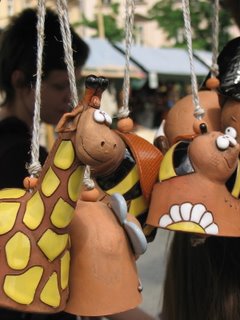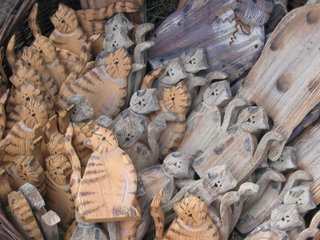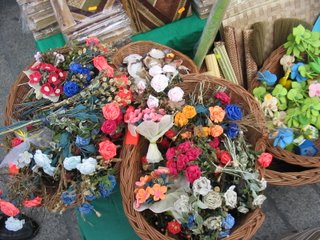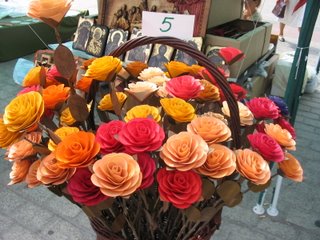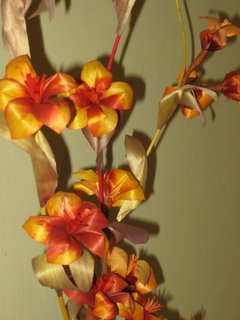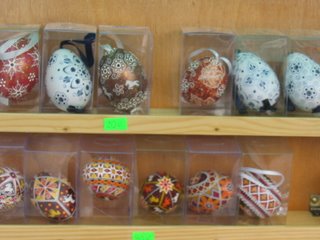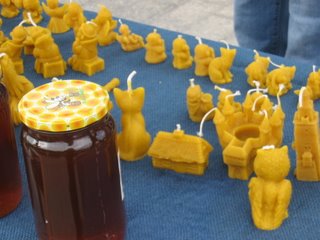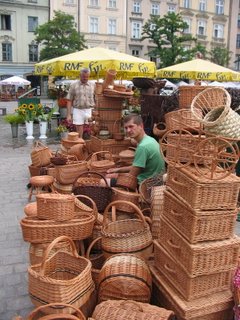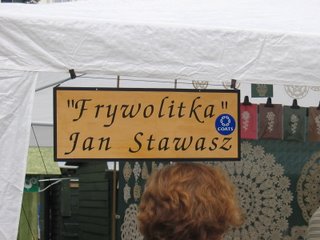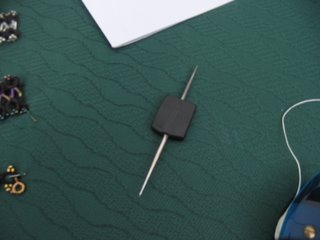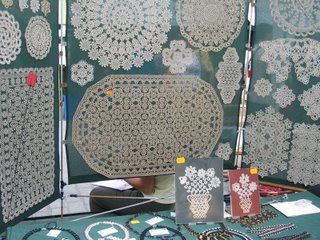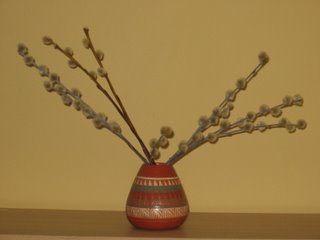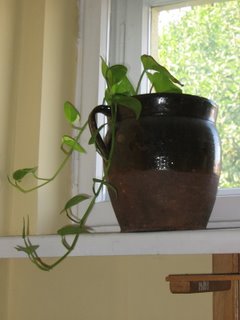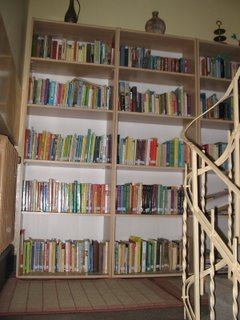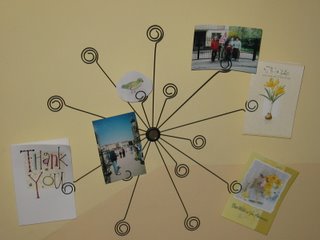Did I mention that I love pottery and collect it? Oh, I did? Well, this is how it all began, with this humble little pot. I bought it at the very first craft fair I attended. I can't remember what I paid, but it was probably between $2-3 dollars. I just picked it up because I thought it was cute, if a bit rustic, and it served a function in my kitchen as well. It still does.

Since then, I've haunted the pottery booths at the craft fair every year, adding at least one piece to my collection. Most of these pots are amazingly inexpensive. I've tried to make it a rule that I will USE the pottery I buy, but I have to admit that "use" has been extended in recent years to "display for our viewing pleasure." None if it is stashed away in the closet or garage gathering dust, though!

The craft fair is, of course, a pottery collectors dream. The same few
garncarstwa, or potters, come year after year. They each have their own styles, but every year offers something a little different--new shapes, new glazes, and occasionally, a truly unusual piece. This potter, Jerzy Miko (you can only see his legs!), is one of my favorites. He brings his daughter to the fair every year, and she seems quite grown up this year, as I haven't seen them for two years. Over the years, she has made little figurines--usually animals--out of clay, and sold them at the fair as well. Can you spot a cat in the midst of the more typical pots? I think that's hers.

I have a few pieces at home already that bear his mark. I needed an additional container for the counter in my new kitchen, so this was my first purchase.

The shape and the color are very pleasing, but the picture doesn't do justice to the sheen of this glaze--very nice! Oh, and of course it's a handy thing. I needed a place to hold those spatulas and spoons close to the stove-top!
If you are a pottery collector, there is nothing like the site of a sea of pots to set your heart beating faster. I truly appreciate them much more on an individual basis, so I can feast my eyes on their shapes and their glazes, enjoying each and every little "imperfection" in the glaze or finish that is the hallmark of hand-crafted pottery. Nevertheless, a display like this is similar to visiting a bookstore--there's so much to look at, and you just know that one or two of the books amongst the vast display is going to come home with you and become a dear friend.

As it turns out, I was quite right! I needed a tall pot like this one for a particular purpose (which I will share later), and I found just what I needed in the sea above. This pot is quite differently-shaped from the sort I usually choose, but I needed the height, and the shape is growing on me.

Several years ago, I purchased a couple of pickle-crocks from the couple who run this booth (I don't know their names!), which I use as canisters for flour and sugar. I'll show them off another day, when I'm sharing pictures from around the house. (Someone asked before about the mat under the vase. It's part of a larger set I was given by some visitors from Riga, and was handmade in Latvia.)
Part of the fun of the craft fair, naturally, is watching the craftsmen at their tasks. It doesn't show well in this picture (check out the one above, where you can see the potter's legs), but all of these potters use a kick-wheel, not an electric turntable. There is a large wooden "wheel" at the base of a rod. The table sits on top of the rod, and the potter kicks the wheel below to spin the table at optimum speed. I can't remember this man's name, but he made the pottery from this last booth. I've got a couple of serving bowls made by him (and yes, I dish up our meals in them--I asked if the glazes were safe, first, though!). I also have a crock in that muddy-yellow color. After already buying a couple of pieces of pottery, I'm debating about buying yet another serving bowl from him this year. The shapes are a little different (very pleasing), but he has some new glazes that would look really nice with the pieces I already have. Decisions, decisions! For reasons I cannot guess, his items are priced a little higher than the others.

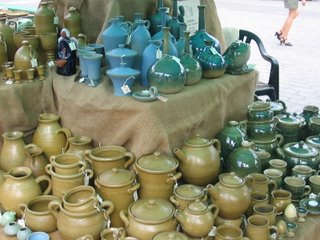
Well, I guess that's all I have to share for now. If you're wondering what all the fuss is about, and what I could possibly find attractive about pottery, I'm afraid I can't tell you. I didn't plan to begin collecting pottery. I just bought that first little pot because I liked it. And then another pot or crock because I liked it. And pretty soon, it was a collection, and now I'm positively passionate about it. I just love all the pieces I have.
But I'll tell you a little secret, if you don't tell my kids. As much as I do love and enjoy all the pottery in my home, I am aware that my collection is susceptible to breakage, especially because much of it is in daily use. I've accepted in advance the fact that sooner or later something is going to get broken. And I've decided I won't mind too much when it happens, because then I'll have a perfectly lovely excuse to shop for some more...
In the meantime, I'd rather use it than hoard it, and the price doesn't justify treating it like antique China.

